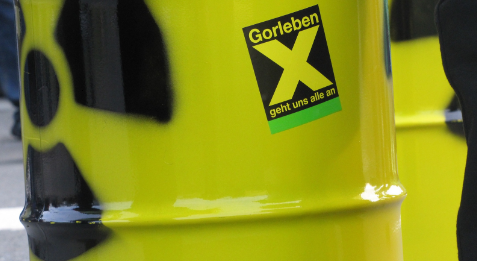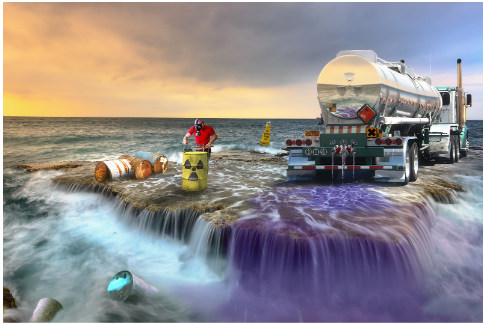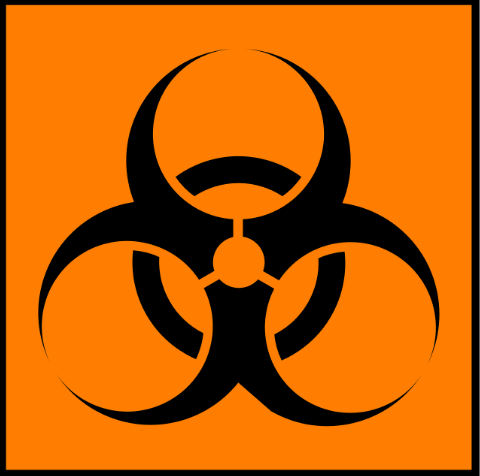Hazardous waste is an integral part of life and human activity. Despite all the attempts of the scientific community, their production could be reduced, but not completely replaced at this stage. It is therefore imperative that we take all appropriate measures to prevent their harmful effects and potential accidents that may occur during their life cycle.

What can be hazardous waste?
A classification has been developed according to which hazardous waste can be flammable (liquids and solids), corrosive, reactive, toxic and radioactive.
Toxic waste (also called toxic) speaks for itself by its name – if swallowed, it could pose a danger to some or all living things. Extremely risky is the ingress of such substances into the soil and water. Even if they are negligibly small quantities , their accumulation can lead to a real ecological catastrophe.
And even minimal amounts of certain substances that we take, for example, through drinking water, can lead to damage to health and death of people and animals. Some types of waste can generate toxic gases and be dangerous for inhalation.
Unlike poisons, corrosive waste has corrosive chemical properties, so it should not be in superficial contact with any tissues.
Waste that poses a risk of explosion is divided into solid and liquid materials. This distinction is mainly due to the fact that each of the two types has specific transport safety requirements.

Medical waste is also not to be underestimated. They are a potential source of biological infections – these are all kinds of bandages, test tubes, needles, syringes and others, as well as protective equipment such as gloves and masks. This also classifies them as hazardous waste that needs to be treated in a special way.
Especially in the conditions of the KOVID-19 pandemic, many discussions were raised on the topic of the removal of waste materials from medical activities. Part of the medical waste is also radioactive.
By nuclear or radioactive waste we mean all materials that cannot be reused – not directly. In principle, they still have a charge that can be reused after recycling.

Many people are not yet aware that Waste electrical and electronic equipment (WEEE) is also hazardous. It uses many materials that are toxic or that emit a lot of pollution during their production.
All wires, for example, are made of aluminum. It is one of the most common metals in the world.
However, the problem is with the technology for its extraction, which is extremely polluting. Steel, on the other hand, produces many harmful emissions and thus contributes to the intensification of global warming.
Only if these materials are recycled will the world’s hazardous waste be drastically reduced. But WEEE is dangerous in itself because it can release a variety of high-risk chemical elements such as mercury, cadmium, beryllium, and lead into nature.
Although not hazardous in transit, plastics are now also classified as hazardous waste. This is because its accumulation in the environment has already shortened life on the planet by hundreds of years and still continues to do so.
Attempts to limit the amount of non-degradable plastic waste in nature have been largely unsuccessful in recent years. The fact is that some of the polymers used are recyclable, but on the other hand, in order for this to happen, they must be properly sorted. garbage collection and transported to the correct processing stations.
Legislation – where and how is hazardous waste disposed of?

Bulgaria is a party to the European Agreement concerning the International Carriage of Dangerous Goods by Road , abbreviated ADR. This makes the carriers of hazardous waste on the territory of our country obliged to comply with its provisions, transposed into our national legislation.
Hazardous household waste
Hazardous household waste is collected by municipal authorities in places, and they most often organize periodic acceptance of waste by citizens. This is done mostly with the help of specialized mobile collection points. Where and when they are placed, the municipalities announce in a timely manner with media campaigns.
Hazardous industrial waste
Hazardous waste manufacturers are themselves responsible for finding a way to reach the relevant facilities without accidents, where they are first disposed of and then destroyed or recycled as appropriate.
If our day-to-day operations as a business generate such waste, we are obliged to take measures for their proper treatment. For this purpose we will need the services of a licensed company. It will deal with the preparation of the necessary supporting documentation, which must be on board the vehicle at all times.
How are different types of hazardous waste handled?
Nuclear waste can be disposed of in several ways. Some countries, such as Bulgaria, bury them underground at appropriate depths, depending on how radioactive they are.
There are some countries that immerse them deep in the ocean – this method is often criticized, especially in view of the fact that nuclear waste is recyclable, as a result of which part of it can be reused.
Many other types of hazardous waste are also buried in underground landfills or incinerated. Incineration is an effective method to reduce the volume of waste, but on the other hand can be an environmental problem in itself – by releasing fine particulate matter into the atmosphere, for example.
Waste that can be recycled – for example WEEE, goes to the appropriate places. To do this, they must first be dismantled to their individual components. Then already those of them that could be reused directly, are separated from those that can be remelted for material, and those that can no longer be used.
How is hazardous waste transferred from point to point from waste collection points to processing facilities?
When it comes to hazardous waste transport, it is most prudent to choose the shortest possible route.
The most commonly used are:
- PPP with semi-trailer
- trailers
- trucks, etc.
Explosive waste is extremely dangerous to transport. Even the slightest road accident or even a small mistake can lead to a ridiculous accident.
For this reason, PPPs for such waste have special compartments for them.
